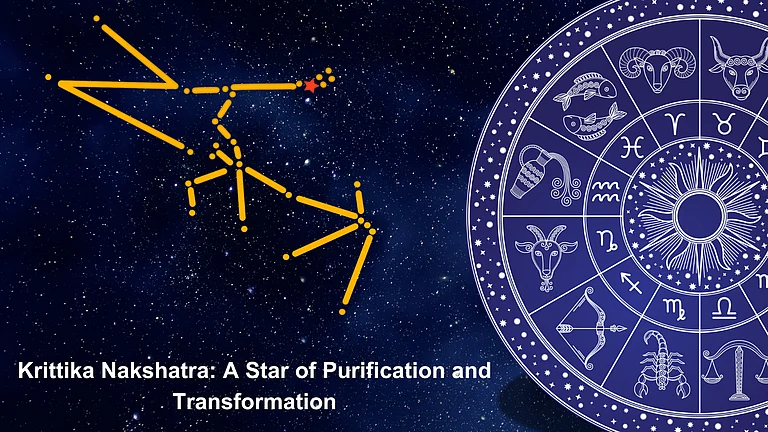Chhath Puja is one of India's oldest and most important holidays. It honours the Sun God (Surya) and his consort, Usha, who is the first light of dawn. Chhath Puja is a very strict ritual that is mostly followed in Bihar, Jharkhand, Uttar Pradesh, and some parts of Nepal. It is done to thank the Sun God for keeping life going on Earth. The festival spans four days and includes a series of meticulously followed rituals and offerings.
Chhath Puja 2024: Date, Shubh Muhurat, And The Significance Of The 4-Days Of Festival
Know the significance of Chhath Puja, as devotees honor the Sun God through strict rituals over four days, symbolizing gratitude, hope, and prosperity.
When is Chhath Puja 2024?
This year, Chhath Puja will take place from November 6th to November 9th. Every day has its own rites and offerings that mark the change from the darkest part of the lunar cycle to the rising sun, which represents the victory of light and hope over darkness.
Chhath Puja Day 1 (November 6, 2024): Nahay Khay
Chhath Puja Day 2 (November 7, 2024): Lohanda and Kharna
Chhath Puja Day 3 (November 8, 2024): Sandhya Arghya
Chhath Puja Day 4 (November 9, 2024): Usha Arghya
Significance of the 4 Days of Chhath Puja:
Chhath Puja is distinct as it venerates the Sun God, a source of life and energy believed to cure ailments, grant fertility, and bring prosperity. It stresses that people should be pure, devoted, and get along with others. In families, people pray for each other's health. The festival also honours Chhathi Maiya, the benevolent goddess of well-being, fertility, and strength.
Each of the four days of Chhath Puja is very important and has its own traditions that people follow with great faith and devotion.
Nahay Khay (Day of Purification) : The first day, Nahay Khay, marks the beginning of the Chhath Puja. On this day, devotees take a holy dip in a river or pond, which symbolizes spiritual purification. After that, they get water from the river to cook their food. The food is made purely and easily, and the whole family shares it. Usually, it has pumpkin soup, rice, and dal. This meal marks the beginning of the time when people are fasting.
Lohanda and Kharna (Day of Fasting): The second day of Chhath Puja is called Lohanda and Kharna. Devotees maintain a rigorous fast without water throughout the day. In the evening, after offering prayers, they prepare a special prasad of jaggery-based kheer (sweet rice pudding), chapati, and bananas, which are then offered to the deities and consumed by family members. After this meal, the Nirjala fast, which lasts for thirty-six hours and does not include water, begins. It is at this point that the event becomes the most intense. Those who are committed to the practice abstain from all forms of food and water throughout this period, which demonstrates a great deal of mental discipline.
Sandhya Arghya (Evening Offering to the Setting Sun): On third day of Chhath Puja, Devotees congregate at the banks of rivers or ponds, carrying baskets that are stuffed with offerings. These offerings include fruits, thekua, which is a traditional sweet made of wheat flour and jaggery, and other prasad ingredients. As the sun begins to set, they stand in water that is up to their waists and offer the evening arghya to the lowering sun. It's a way to say thanks for the day and goodbye to the light that's going out. There is an air of complete dedication in the air as the devotees sing traditional Chhath songs and pray and praise Chhat Maiyaa.
Usha Arghya (Morning Offering to the Rising Sun): On Usha Arghya, the last day, people worship the rising sun. Early morning fasting devotees arrive at the riverbanks. At the moment of sunrise, they present the Usha Arghya to the deity. It really symbolises the new life, hope, and happiness. This also means that the fast is over. After doing the morning rituals, followers break their fast by eating prasad, giving it to family and friends, and blessing each other. The practice of fasting and prayer ends on the fourth day.
Astrological and Spiritual Significance of Chhath Puja:
In astrology, the sun stands for vigour, power, and the energy of the soul. Celebrating the Sun during Chhath Puja is said to help the Sun to be stronger in one's birth chart, so producing favourable results in personal relationships, health, and career. It is said that performing Chhath Puja can help eliminate negative karma, attract good fortune, and promote mental clarity.
Chhath Puja is not merely a religious celebration but also a testament to the ancient knowledge of solar energy’s importance. By dedicating the festival to the Sun, Chhath Puja also acknowledges the role of natural resources in human life, symbolising gratitude towards the forces that sustain life on Earth.
When Chhath Puja is done with great love and purity, it strengthens the spiritual and cultural connection to nature. The festival highlights the value of discipline, gratitude, and respect for natural elements. Its observance transcends religious boundaries, uniting people in devotion to the life-giving force of the Sun. In 2024, as devotees come together to celebrate Chhath Puja, the ancient tradition continues to illuminate lives, embodying hope, health, and harmony.
